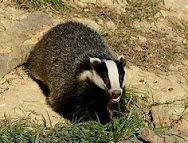Croeso a bore da pawb,
The weather seems to be settling down, although if you have ventured outside this last week you would have felt the chill. This hasn't stopped our summer migrants arriving though with, Whimbrel, and Tree Pipit reported from the usual sites.
Flowers are responding to the increasing day lengths with the dunes at Pembrey starting to colour up with Green Winged Orchids, Dune Pansy and Rue -leaved Saxifrage all adding a splash of colour. A search for Moonwort was not successful I'll need to try harder, discover more here. Common Moonwort – Learn About This Wildflower (wildflowerweb.co.uk)
The latest edition of Ringing & Migration dropped through the door this week, a very specialized publication, often over my head, being a more practical person; but I did glean some fascinating facts regarding some recent bird "longevity" reports, ( recent in bird research means up to 2021)
Fulmar a bird which occurs in the far west of the county needing cliffs for breeding, the oldest recorded bird was an amazing 45years 9months 12days old when observed in 2021 on Orkney
Shelduck a familiar bird along the Carmarthenshire coast was 19years 10months 15days when observed near York
Shelduck | BTO - British Trust for Ornithology
Here is some more information on bees in Wales
Wales-Threatened-Bee-Report-SUMMARY.pdf (buglife.org.uk)






















